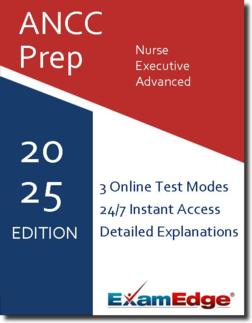ANCC NEA-BC Practice Tests & Test Prep by Exam Edge - Topics
Based on 34 Reviews
- Real Exam Simulation: Timed questions and matching content build comfort for your ANCC Nurse Executive - Advanced test day.
- Instant, 24/7 Access: Web-based ANCC Nurse Executive - Advanced practice exams with no software needed.
- Clear Explanations: Step-by-step answers and explanations for your ANCC exam to strengthen understanding.
- Boosted Confidence: Reduces anxiety and improves test-taking skills to ace your ANCC Nurse Executive - Advanced (NEA-BC).

Understanding the exact breakdown of the ANCC Nurse Executive - Advanced test will help you know what to expect and how to most effectively prepare. The ANCC Nurse Executive - Advanced has 150 multiple-choice questions The exam will be broken down into the sections below:
| ANCC Nurse Executive - Advanced Exam Blueprint | ||
|---|---|---|
| Domain Name | % | Number of Questions |
| Leadership | 34% | 52 |
| Quality and Safety | 24% | 36 |
| Human Capital Management | 14% | 21 |
| Health Care Delivery | 27% | 41 |


